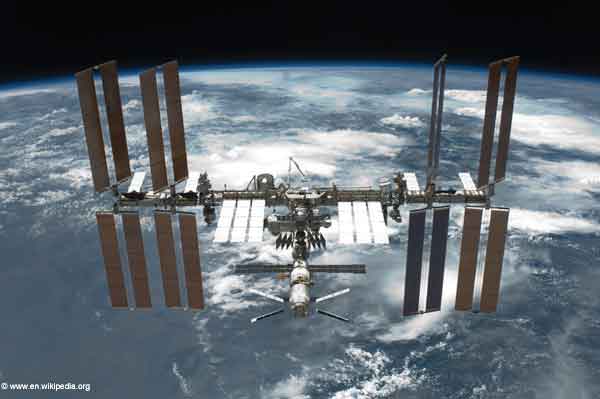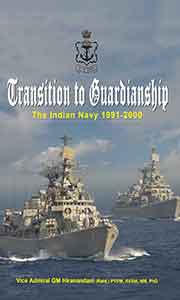Weaponisation of space would include space control and space-based systems that could destroy targets on the earth’s surface. Space control involves protecting own systems in orbit, attacking enemy assets in space and denying the enemy access to space. The means of achieving these objectives would be to prevent the enemy from launching satellites and destroying or degrading enemy satellites in space. It is akin to control over the air or the sea which would involve denying access to the air or to the sea to the enemy while ensuring access to own or friendly forces. Attacking terrestrial targets from satellites in space would limit reaction time available to the enemy and increase the element of surprise while reducing own losses.
The UN General Assembly recognized the threat from uncontrolled military expansion into space…
The Ramayana and the Mahabharata are the two great ancient Epics of India. These Epics, especially the Mahabharata, pick up the thread of the tale of devastation and destruction. Atlantis rather displeased at the humiliating defeat, decided that they were no longer interested in subjugating the Rama Empire (an Indian empire) and decided instead to annihilate the major cities using weapons of mass destruction. Sanskrit scholars could not comprehend what was being described in the Epics until the dropping by the United States of America of the first atomic bombs on the cities of Hiroshima and Nagasaki in Japan. There are authentic verses from the Indian Epics as under:
“Gurkha, flying a swift and powerful Vimana (fast aircraft) hurled a single projectile (rocket) charged with the power of the universe (nuclear device). An incandescent column of smoke and flame, as bright as ten thousand suns, rose with all its splendour. It was an unknown weapon, an iron thunderbolt, a gigantic messenger of death, which reduced to ashes the entire race of the Vrishnis and the Andhakas. The corpses were burned beyond recognition. Hair and nails fell out, pottery shattered without apparent cause and the birds turned white. After a few hours all foodstuff was infected. To escape from this fire, the soldiers threw themselves into streams of water to wash themselves and their equipment.”
There are descriptions of other weapons. The ‘Brahmadanda’, the most powerful weapon in the universe, belonged to Brahma. The ‘Pashupatastra’ was the weapon of Mahakali, the consort of Mahadeva. This was granted to Arjuna by Shiva and was among the most destructive and foreboding weapons. The ‘Brahmastra’, which contained the mystical force of Brahma, released millions of missiles creating great fires and it had the destructive potential of extinguishing all creation. ‘Vajra’ was the thunderbolt weapon of Indra.
All these weapons raining death and destruction have been described in great detail in the Epics written thousands and thousands of years ago. The fertile imagination of great Indian minds had envisaged the exploitation of space and energy as weapons of war a long time ago. The story is somewhat different today.
The USA, Russia and China have developed and successfully tested Anti-Satellite Weapons (ASAT)…
Definition of Space
There is no firm boundary where outer space begins but is generally accepted as being 100 km
above sea level. This imaginary line called the ‘Karman Line’ is conventionally used as the delineation of outer space for international treaties involving space. In his poem ‘Four Quartets’, T.S Eliot calls it ‘the vast interstellar spaces, the vacant into the vacant’.
Outer Space Treaty
Recognizing the threat from uncontrolled military expansion into space, the UN General Assembly adopted the ‘Declaration of Legal Principles Governing the Activities of States in the Exploration and Use of Outer Space’ in 1962. This resolution became the basis of negotiations for a multilateral mechanism regulating the use of space, the Outer Space Treaty (OST) which came into force in October 1967. It established the principle that outer space is a global commons and not open to national appropriation and codified the phrase, “peaceful use of outer space” thus banning the placement of weapons of mass destruction in orbit and the establishment of military bases in space. The Outer Space Treaty provides the basic framework on international space law, including the following principles:
- The exploration and use of outer space shall be carried out for the benefit and in the interest of all countries and shall be the province of all mankind.
- Outer space shall be free for exploration and use by all States.
- Outer space is not subject to national appropriation by claims of sovereignty, by means of use or occupation or by any other means.
- States shall not place nuclear weapons or other weapons of mass destruction in orbit or on celestial bodies or station them in outer space in any other manner.
- The Moon and other celestial bodies shall be used exclusively for peaceful purposes.
- Astronauts shall be regarded as the envoys of mankind.
- States shall be responsible for national space activities whether carried out by governmental or non-governmental entities.
- States shall be liable for damage caused by their space objects.
- States shall avoid harmful contamination of space and celestial bodies.
Since the launch of the earliest satellite for communication purposes, space has de facto been militarised…
PAROS
In 1981, a UN General Assembly resolution on Prevention of an Arms Race in Outer Space (PAROS) tasked the Conference on Disarmament (CD) with negotiating a treaty to ban all space weapons. The proposed PAROS treaty would complement and reaffirm the importance of the 1967 Outer Space Treaty, which aims to preserve space for peaceful uses by prohibiting the use of space weapons, the development of space-weapon technology and technology related to “missile defence.”
The treaty would prevent any nation from gaining a military advantage in outer space. The CD made some progress on a draft treaty until disagreement between China and the US in 1995 prevented consensus on the creation of the ad hoc committee to continue negotiations. China insisted that it would only support final negotiations on a Fissile Material Control Treaty (FMCT) if PAROS was considered at the same time.
Arguing that there is no space race, the US has consistently opposed PAROS. Due to China’s insistence on linking the two items, US opposition to PAROS and blocked approval of a work program, the CD has remained effectively paralyzed since 1995. The US and China, along with Russia are the frontrunners in weaponisation of space, though no weapons are known to have actually been deployed in space till now. India’s attempts, if any, to enter this exclusive club have been completely thwarted. India has signed and ratified the Outer Space Treaty of 1967.
Weaponisation vis-a-vis Militarisation of Space
A clear distinction has to be made between weaponisation and militarisation of space. Since the launch of the earliest satellite for communication purposes, space has de facto been militarised. Today, satellites of many countries, including India, orbit in space and are used for multifarious military purposes. On July 01, 2013, INRSS-1A, the first of the seven satellites planned under the Indian Regional Navigation Satellite System (INRSS) programme, was successfully launched from Sriharikota. The INRSS with seven satellites will cover a specified regional area around India.
The ability to destroy satellites in orbit around the earth has been demonstrated by China…
The Global Positioning System (GPS) of the US has 24 satellites in orbit and there are plans to enhance numbers to 31 and later to 36. The GLONASS of Russia currently has 24 satellites and is planning to have 30 though one satellite crashed at launch recently. The Galileo system of Europe is to have 27 active satellites plus three in orbit as stand by for replacement. China’s Beidou system will have a constellation of 35 satellites. The Beidou system will be available to the People’s Liberation Army (PLA) and interestingly, also to the Pakistan military. The INRSS is expected to be operational by 2015 and will, to an extent, reduce the Indian military’s total dependence on the GPS. India also has one Ballistic Missile Defence (BMD) system ready for deployment and others are under production. The BMD is an expensive system which does not and cannot guarantee security against incoming Surface-to-Surface Missiles (SSMs). The resources invested in this system could have been better utilised to strengthen the nation’s second strike capability.
The USA, Russia and China have developed and successfully tested Anti-Satellite Weapons (ASAT). Indian scientists claim to have “all the building blocks necessary for ASAT” but till date, no tests have been carried out. All these developments could be clubbed under militarisation of space as no clause of the Outer Space Treaty has been violated by any of these systems.
Weaponisation of space would include space control and space-based systems that could destroy targets on the earth’s surface. Space control involves protecting own systems in orbit, attacking enemy assets in space and denying the enemy access to space. The means of achieving these objectives would be to prevent the enemy from launching satellites and destroying or degrading enemy satellites in space. It is akin to control over the air or the sea which would involve denying access to the air or to the sea to the enemy while ensuring access to own or friendly forces. Attacking terrestrial targets from satellites in space would limit reaction time available to the enemy and increase the element of surprise while reducing own losses.
There is no consensus on what constitutes a space weapon because most of the strategic weapons – be they space-to-space, space-to-earth, earth-to-space or earth-to-earth, transit through the medium of space. Different technologies could be employed to destroy, degrade or damage the intended targets. Some of the technologies that could be exploited are elaborated on in the succeeding paragraphs.







These are excellent views and a very enriching article on the outer space But most of it is only from the angle or point of view of UNO orientation ….not from the Weaponization angle really ….As the real countries who today are capable of weponizing the space do not follow any norms or rules & regulations of the UNO etc..They all are group of UNSC permanent members for too long and none of them need to follow any such rules .. Rules are made for Dogs … Not Lions …& These lions of the space has made these Rules now for other nations to Follow …. UNO is just a showoff .. the rulers of the world and the decision makers make the rules and drive them as per their business benefits for every Space maneuver ever done by any country what -so ever till date …So whats the point of UNO Rules and this that … we were expecting some International ” Satellite systems facts ” & figures of their strength & Disaster power & so on from a person of this repute in the indian Defence ….. like for Instance the laser guided US Satellite weaponry systems etc & some more facts about the same …..kindly talk on that fact in your next article please … regards .